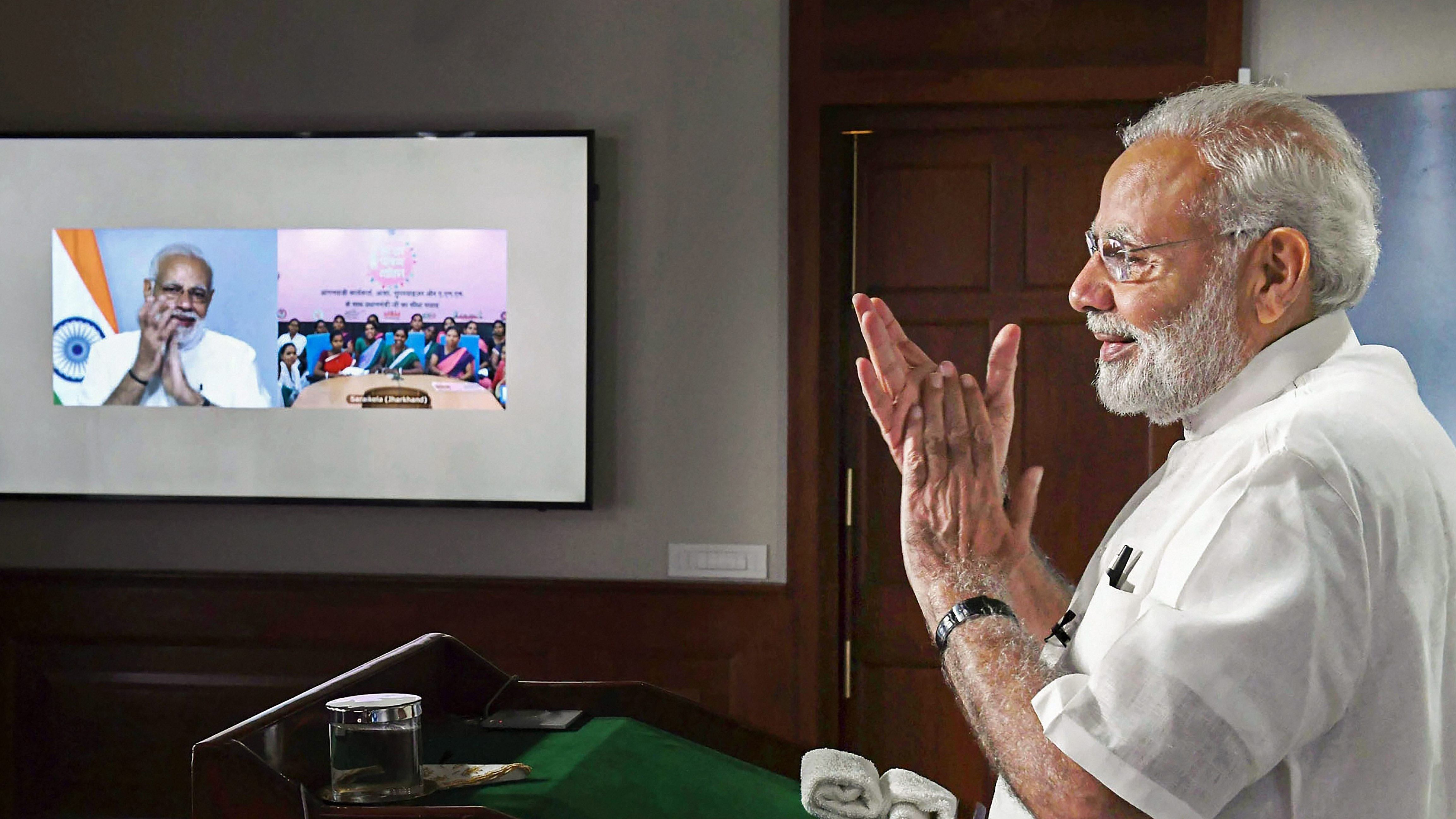
After serving as foot soldiers during the pandemic, often working overtime, more than a million ASHA workers are still being denied the statutory minimum wage in the country. Considered as ‘honorary volunteers’ and not full-time employees, ASHAs, or Accredited Social Health Activists, are only paid an honorarium. Shielding themselves with this clause, the Union and state governments declared that these women do not fall under the Minimum Wage Act!
This is easily the biggest cop-out by the Health Ministry and state health departments as the burden of providing last-mile primary care is on the shoulders of these women. Paying them a fixed minimum salary is not only a matter of right but also a necessity if the government cares about the quality of grassroots health services.
ASHA worker unions joined trade unions who called for a nationwide strike on March 28-29 during the Budget session of Parliament, primarily demanding a statutory minimum wage. They are the first port of call for any health-related demands of deprived sections of the population, especially women and children, who find it difficult to access health services.
Their role is much beyond the scope defined by the National Health Mission (NHM). Even before the pandemic, they worked overtime, but they were stretched even further once Covid-19 hit. Their duties included tracking the health of mother during pregnancy and the child till it is three years old, conducting disease outbreak surveys, working for immunisation and Pulse Polio programmes, taking the sick to PHCs, etc. During Covid-19, they conducted house-to-house surveys to identify patients with SARI, ILI, travel history, primary and secondary contacts. They took people to quarantine and testing centres, conducted health screening at inter-state borders, facilitated vaccination drives and spread general awareness.
Their wages vary from state to state, over and above which they are supposed to receive incentive-based pay from the Union government on completion of certain tasks. The honorarium goes as low as Rs 2,000 per month. Facilitating institutional delivery by bringing a pregnant woman to the health centre, for instance, should fetch them an incentive of Rs 300.
In a clear case of labour exploitation, ASHA workers are often not even paid their paltry sum on time. Many are still awaiting their incentive of Rs 1,000 from the Union government and Covid-19 risk allowances by state governments. A compensation of Rs 50 lakh, announced by the Centre to families of ASHA workers who succumbed on duty, also never reached them.
Taking into account a minimum wage of Rs 21,000 per month, as recommended by the Indian Labour Conferences, and the inflation since then, a fixed minimum salary must be extended to ASHAs, while also recognising them as full-time government employees. This will require additional budget for the health sector.
IntraHealth International and USAID’s technical report on ‘Performance-Based Payment System for ASHAs in India’ stated that the system has weaknesses which have a negative impact on the effectiveness and sustainability of the ASHA model. This includes aspects such as delays in payment, lack of clarity on the payment process, and of data on how incentives affect outcomes. The report also notes that financial remuneration was found to be the key motivational factor impacting their performance.
“Conceptually, ASHAs are voluntary health workers. However, if ASHA earnings are their sole source of income, it is not feasible to make them true unpaid volunteers,” the report said, further adding, “The amount of work that ASHAs are expected to complete seems to be expanding, without a corresponding increase in compensation.”
Failing to consider the demands of the ASHA workers who protest year after year, and the recommendations of experts advocating for better pay, will prove costly when it comes to implementation of health schemes on ground. The largest payment for ASHA workers comes from the Janani Suraksha Yojana that helps increase institutional deliveries and bring down maternal mortality.
Government guidelines created in 2005 don’t consider ASHA workers as employees and hence they only receive incentive-based pay. NHM originally stated that their work is tailored to not interfere with their normal livelihood. These guidelines no longer hold water as in reality, they work a lot more than the stipulated 2-3 hours a day, at times even more than regular health staff.
It is high time the system is revised as ASHAs remain the bridge between the public health system and the local community. As was evident from the pandemic, it is these women coming from financially and socially backward classes who can reach the last mile and vastly improve the quality of grassroots health services.
(The writer is a journalist and public policy enthusiast)